Top 5 India’s Tiger Reserves
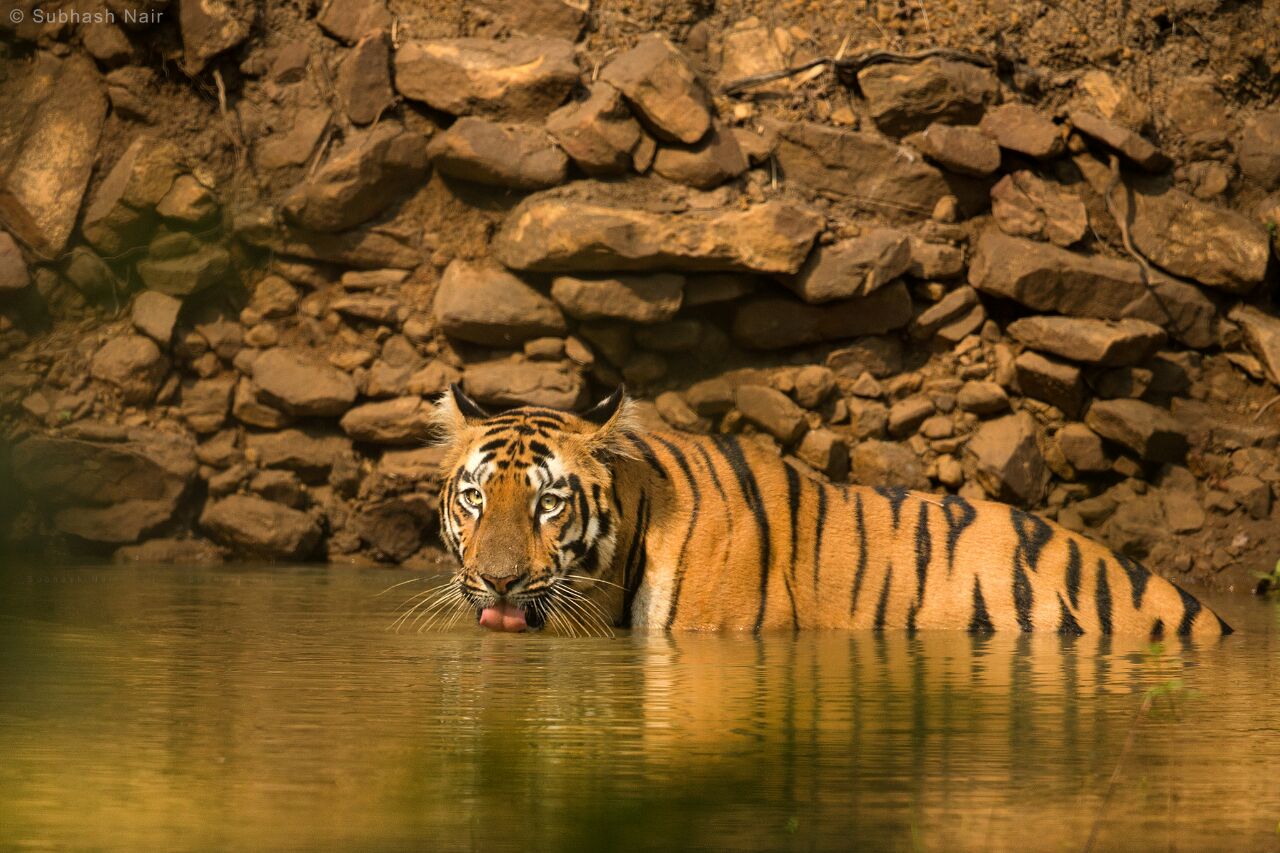
This article will give you the top 5 india’s tiger reserves based on the sightings data that we have collected for more than a year and based on our metric TSI* (Tiger Sighting Index tm). We are NOT classifying based on government reports of how many Tigers are resident in that park or based on the Tiger density (number of tigers per 100 sq. km) but purely based on how many Tiger sightings have happened over the last one year and what is the probability of tiger sighting based on last years data.
In this list we have one from North India, 3 from Central India and 1 from the South.
Below is our Top 5 India’s Tiger Reserves
Ranthambore
[Central India]
Ranthambore National Park or Ranthambore is one of the largest national parks in northern India, covering an area of 392 km². It is situated in the Sawai Madhopur district of southeastern Rajasthan, about 110 km northeast of Kota and 160 km southeast of Jaipur, which is also the nearest airport. The nearest town and railway station is at Sawai Madhopur, about 11 km away. The park is also close to the Kota railway station.It’s approx. 375 kms from Delhi. RIDCOR operates a mega-highway between Kota and Ranthambore. Ranthambore National Park lies at the edge of a plateau and is bounded to the north by the Banas River and to the south by the Chambal River. It is named after the historic Ranthambore fortress, which lies within the park.
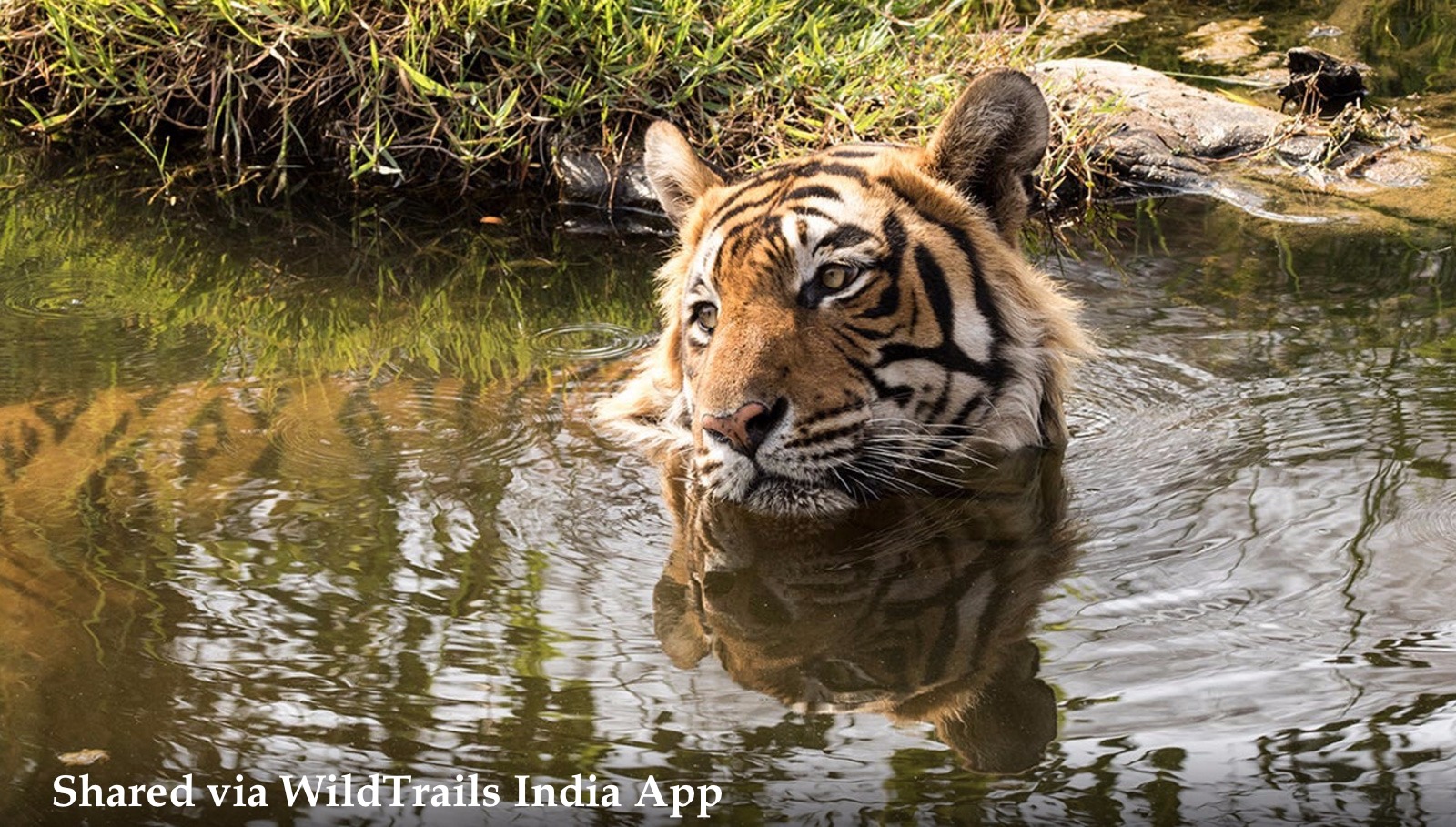
Ranthambhore was established as the Sawai Madhopur Game Sanctuary in 1955 by the Government of India and was declared one of the Project Tiger reserves in 1973. Ranthambore became a national park in 1980. In 1984, the adjacent forests were declared the Sawai Man Singh Sanctuary and Keladevi Sanctuary, and in 1991 the tiger reserve was enlarged to include the Sawai Man Singh and Keladevi sanctuaries.
Ranthambore wildlife sanctuary is known for its tigers and is one of the best places in India to see these animals in their natural jungle habitat. Tigers can be easily spotted even in the daytime. The best times for tiger sightings at Ranthambore National Park are in November and May. The park’s deciduous forests are characteristic examples of the type of jungle found in Central India. Other major wild animals include leopard, nilgai, wild boar, sambar, striped hyena, sloth bear, southern plains gray langur, rhesus macaque and chital. The sanctuary is home to a wide variety of trees, plants, birds and reptiles, as well as one of the largest banyan trees in India.
Ranthambore is our pick #1 for Top 5 India’s Tiger Reserves
Tadoba
[Central India]
Tadoba Andhari Tiger Reserve is a tiger reserve in Chandrapur district of Maharashtra state in central India. It is notable as Maharashtra’s oldest and largest national park. It is one of India’s 43 “Project Tiger” – tiger reserves.
The name ‘Tadoba’ is the name of the God “Tadoba” or “Taru”, praised by the tribal people who live in the dense forests of the Tadoba and Andhari region, while the Andhari River that meanders through the forest. gives the ‘Andhari’ name.
Legend holds that Taru was a village chief who was killed in a mythological encounter with a tiger. A shrine dedicated to the God Taru now exists beneath a huge tree, on the banks of the Tadoba Lake. The temple is frequented by adivasis, especially during the fair held every year in the Hindu month of Pausha, between December and January.
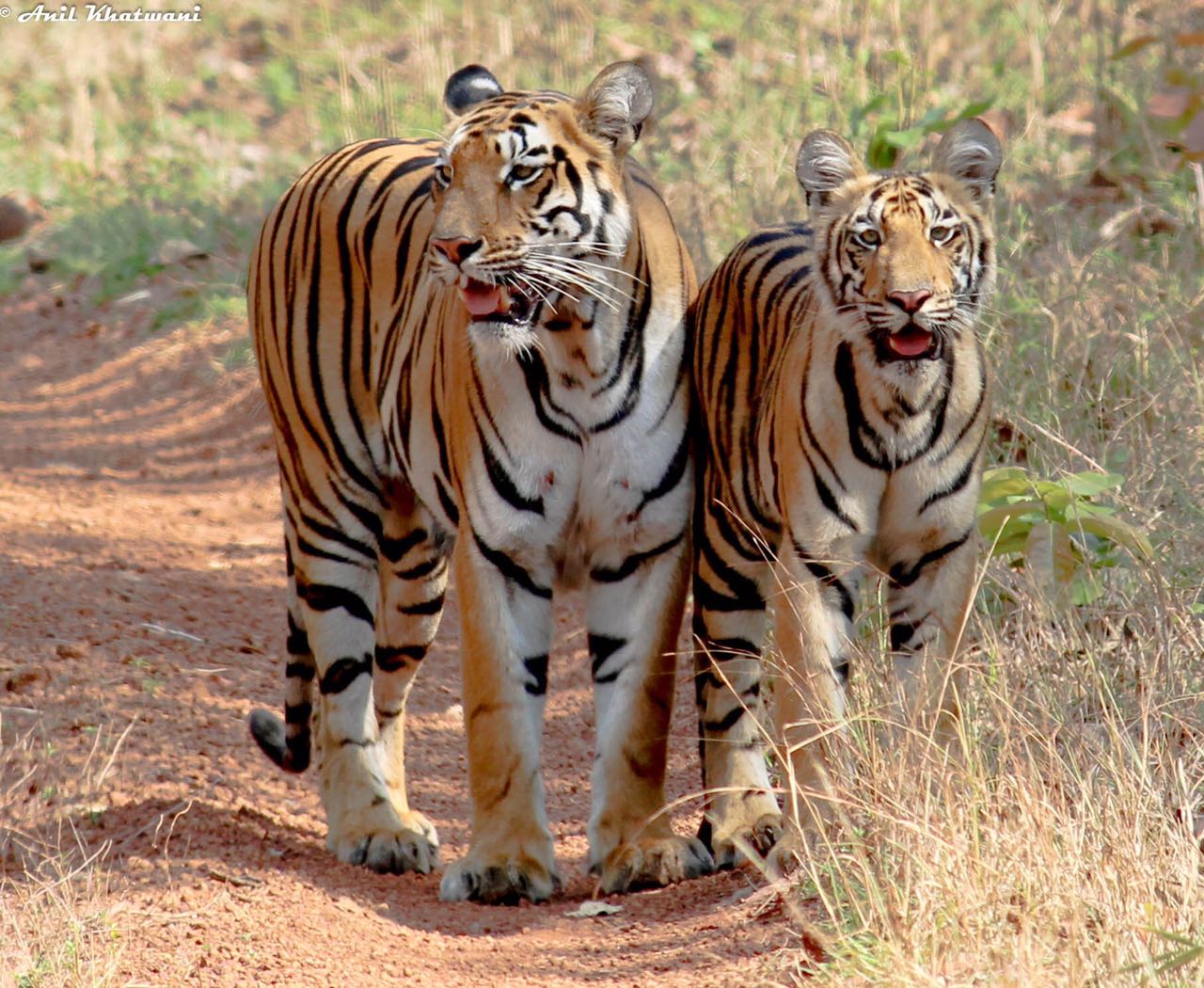
The Gond kings once ruled these forests in the vicinity of the Chimur hills. Hunting was completely banned in 1935. Two decades later, in 1955, 116.54 km2 (45.00 sq mi) was declared a National Park. Andhari Wildlife Sanctuary was created on the adjacent forests in 1986, and in 1995, both the park and the sanctuary were merged to establish the present tiger reserve.
Tadoba Andhari Reserve is the largest national park in Maharashtra. Total area of the reserve is 1727 km2. This includes Tadoba National Park, created in 1955. There are more than 80 tigers (as of Dec 2015) in the reserve, one of the highest in India. Currently (March 2017) it has more than 40 cubs and the best place to get sightings of Tigers and their cubs.
Tadoba is well connected. Nearest airport is Nagpur and is approx 100 to 140 kms from there (depending upon which safari gate you are talking about). Closest railway stations are Nagpur and Chandrapur.
Tadoba is our pick #2 for Top 5 India’s Tiger Reserves
Kabini Nagarhole
[South India]
Kabini is not spoken in the same breadth as of the remaining ones but it is as good if not better than any in the list. Almost unknown in the outside world but the most popular one among wildlife photographers (and they have kept it to be unknown for a reason I think). The only one from south which makes it to the list.
Actually Nagarhole is the national park and the southern part of it which is on the banks for the river Kabini (Kapila) is called Kabini. Nagarhole or Nagarahole is named after Nagarahole (Cobra river in the local language, Kannada), a winding river which runs eastwards through its centre. Situated in the two districts of Mysore and Kodagu in the state of Karnataka. It was originally constituted into a sanctuary in the year 1955 covering an area of 258 sq. Kms and subsequently enlarged to include the adjoining areas of Mysore district and now extends over an area of 643.39 sq. kms which was given the status of a National Park in 1983.
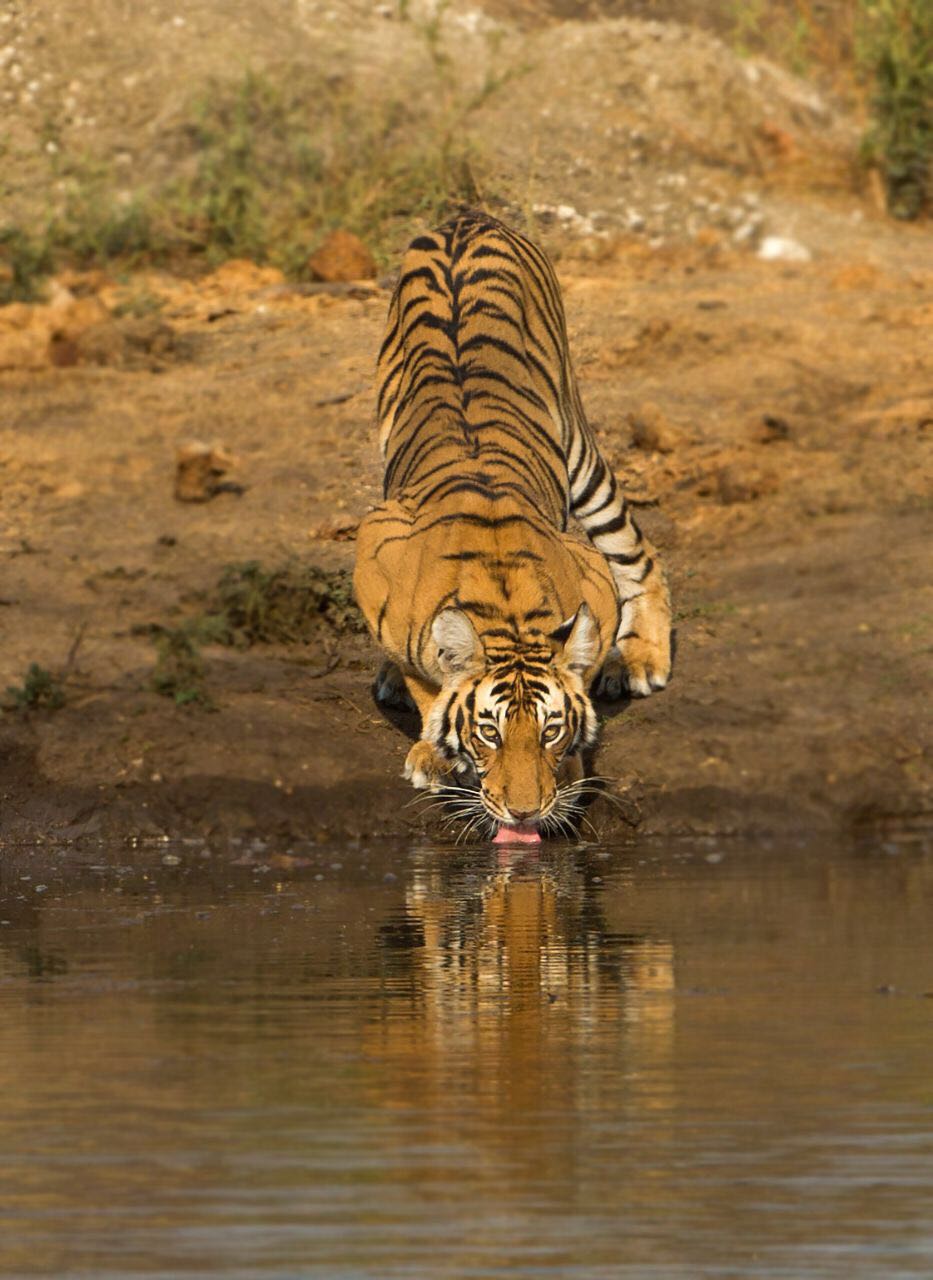
The birth of Nagarhole National Park can be traced to the notification of 285 Sq. km. Game Reserve way back in 1955, which included the reserve forests of Arkeri, Hatgat and Nalkeri in Kodagu. Subsequently, in 1974, reserved forests from the adjoining Mysore district were added to the Nagarhole Game Reserve, which was upgraded to the status of a National Park covering 643 sq. km”.
Kabini is 230 kms south of Bangalore and very well connected by good roads and approx. 5 hrs away. It is approx. 70 kms south of Mysore. Kabini is not just a Tiger reserve but also an Elephant Reserve and a Leopard lair and the only place where you get to see Black Panther (if you are super Lucky)
Kabini Nagarhole is our pick #4 for Top 5 India’s Tiger Reserves
Bandhavgarh
[Central India]
Bandhavgarh National Park is one of the popular national parks in India located in the Umaria district of Madhya Pradesh. Bandhavgarh was declared a national park in 1968, with an area of 105 km2. The buffer is spread over the forest divisions of Umaria and Katni and totals 437 km2. The park derives its name from the most prominent hillock of the area, which was said to be given by Hindu Lord Rama to his brother Lakshmana to keep a watch on Lanka (Ceylon). Hence the name Bandhavgarh (Sanskrit: Brother’s Fort).
This park has a large biodiversity. The density of the tiger population at Bandhavgarh is one of the highest known in India. The park has a large breeding population of leopards, and various species of deer. Maharaja Martand Singh of Rewa captured the first white tiger in this region in 1951. This white tiger, Mohan, is now stuffed and on display in the palace of the Maharajas of Rewa. Historically villagers and their cattle have been a threat to the tiger. Rising mining activities around the park are putting the tigers at risk.
Bandhavgarh has one of the highest density of Bengal tigers known in the world, and is home to some famous named tigers which are large in size and are beautiful.
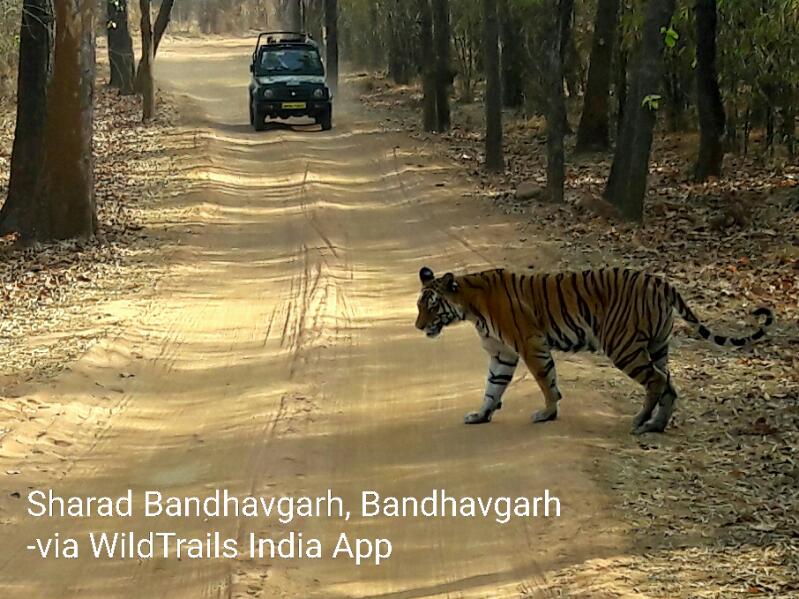
With the tiger at the apex of the food chain, it contains 37 species of mammals. According to forest officials, there are more than 250 species of birds, about 80 species of butterflies, a number of reptiles. But many people have the species’ list of about 350 birds along with photographs. The richness and tranquility of grasslands invites pairs of sarus cranes to breed in the rainy season.
This tiger reserve is densely populated with other species: the gaur, or Indian bison, are now extinct or have migrated elsewhere; sambar and barking deer are a common sight, and nilgai are to be seen in the open areas of the park. There have been reports of the Indian wolf (canis lupus indica), striped hyena, and the caracal the latter being an open country dweller. The tiger reserve abounds with cheetal or the spotted deer (Axis axis) which is the main prey animal of the tiger and the Indian leopard (Panthera pardus fusca). The Indian bison were reintroduced from Kanha.
Bandhavgarh can be reached via either Nagpur or Raipur or Jabalpur [approx. 150 kms] Airports. Nearest Railway station is Umaria [approx. 30 kms] and Nearest Bus stands are Umaria, Katni and Jabalpur.
Bandhavgarh is our pick #3 for Top 5 India’s Tiger Reserves
Pench
The Pench Tiger Reserve is the only national park that straddles across two states – Maharastra and Madhya Pradesh. The Madhya Pradesh one is a 292.85 km2 (113.07 sq mi) located in the Seoni District and Chhindwara District of southern Madhya Pradesh in central India. It is contiguous on the south with the 257.23 km2 (99.32 sq mi) Pench Tiger Reserve (Maharashtra), both of which are included in the Level 1, 13,223 km2 (5,105 sq mi) Tiger Conservation Unit – 31 (Kanha-Pench TCU).
The Reserve gets its name from the Pench River that flows, north to south, 74 km through the reserve. The Pench River bisects the Pench reserve into two nearly equal parts; the 147.61 sq.km of the Western Block which falls in the Gumtara Range of the Chhindwara Forest Division and the 145.24 sq.km of the Eastern Block in the Karmajhiri Range of the Seoni Forest Division.
This area was described as extremely rich and diverse in wildlife from the earliest records available on the 16th century Deogarh kingdom (Kumar 1989). The scenic beauty and the floral and faunal diversity of the Central Indian Highlands have been well documented by the British since the late 17th century, e.g. Forsyth’s (1919) “Highlands of Central India” (first published in 1871). Thereafter, Sterndale (1887) and Brander (1923) have added to the knowledge on the distribution of the flora, fauna and the local inhabitants of this tract. The popular fictional works of Rudyard Kipling, The Jungle Book and The Second Jungle Book also have their stories set around this region.
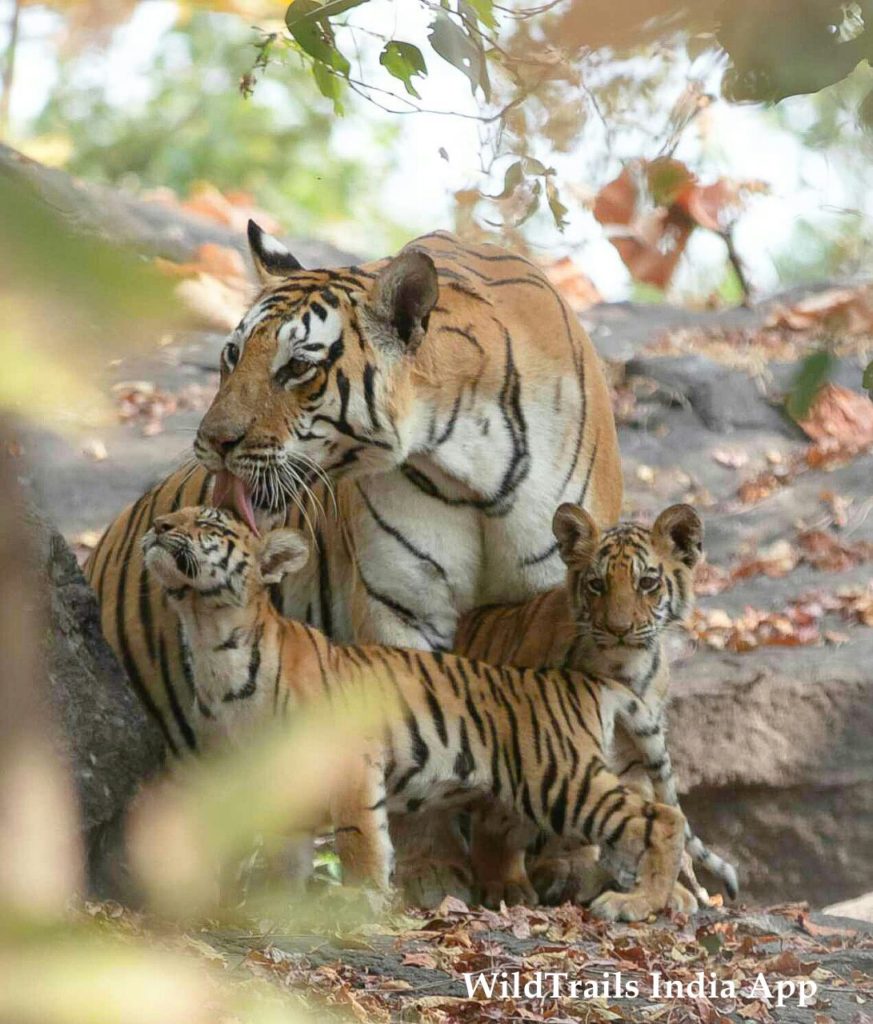
During the 17th Century the Gond rulers of this region cleared large tracts of forests for cultivation and dwellings. This onslaught continued up to 1818, through the rule by the Marathas and later under the British. It was not until 1862 that efforts were made to control the indiscriminate destruction and the forests were declared reserved (elaborated in Kumar 1989).
The Pench Sanctuary was created in September 1977, with an initial area of 449.39 km². The Pench National Park, recently renamed as Indira Priyadarshini Pench National Park, was created in 1983, carved out of the Sanctuary. The Tiger Reserve, 19th in the series, was formed under the Project Tiger scheme in November 1992.
Pench is well connected by Road and the nearest airport, railway station is Nagpur and is approx. 100 kms.
Pench is our pick #5 for Top 5 India’s Tiger Reserves
*[If you want to know the exact data, TSI numbers, please download WildTrails India App]
Further Info:
If you need further info on Top 5 India’s Tiger Reserves, or plan a visit any of theseTop 5 India’s Tiger Reserves and need further info or you want us to help you book safaris and/or stay with any of theTop 5 India’s Tiger Reserves, contact us any time via an email to info@wildtrails.in or call us any time on +918030178142 or WhatsApp us @ +919901175444. Also please do install WildTrails India App or read the below related blogs.
Related Useful Blogs About Top 5 India’s Tiger Reserves:
How to plan an Inexpensive Kabini Stay n Safari
Its Raining Tigers at Nagarhole Kabini. The Data Speaks…
How to pick the Right Pench Safari Gate?
Key Tips for First Time Pench Visitors
How to pick the right Tadoba safari gate?
How to plan a Quick Tadoba Getaway just under 24 hours
WildTrails (Tm) India App – “Discover Indian Wildlife Like Never Before“
PS: Please be a responsible wildlife tourist; No littering, No sounds, No feeding, no getting down from the safari jeep (when on safari), No phone calls. Remember that we are visiting their home and when we are there, let’s follow their rules.
[The WildTrails India App is the best way to get all the details about Indian wildlife sanctuaries (best travel times, safari details, animal sightings, forest accommodations pairing, wildlife related activities, prices, etc). Learn more about WildTrails of India here. ios App is here. Android is here, and Web is on the way. Please do like us on our facebook page here.]
With 4 years of Sightings data + Extensive expert tracker network in jungles, our customers had the best wildlife experiences.
Buy Wildlife Fashion Accessories
Exclusive Online Store for wildlife products
Packages
Packages Loading...
Recent Posts








